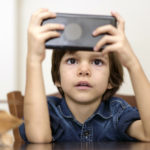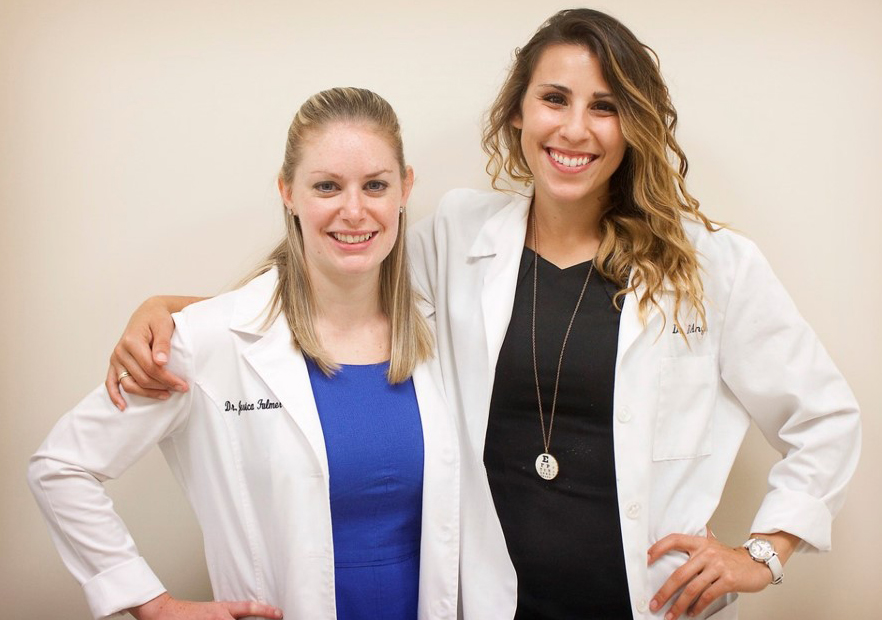
By Miki Lyn Zilnicki, OD, FCOVD,
and Jessica Licausi, OD, FAAO, FCOVD
Sept. 15, 2021
Patients come to you with myriad questions–if you take the time to listen carefully in the exam room and invite those questions.
Here are a few pressing questions from patients that we are building our vision therapy-focused practice by answering.
“How much screen time is appropriate for my child?”
Parents are concerned about the long-term effect screens will have on their children’s mental, physical and ocular health. They recognize their children are likely spending too much time on devices, especially after this past year with stay-at-home orders and distance learning.
We always start this conversation with the recommendations from the American Pediatric Association:
Children younger than 18 months: get ZERO screen time with the exception of video chatting/photos.
2-5-year old: limited to 30 minutes/day (used to be one hour per day)*
5-year-old and above: flexible* but should not be on the device one hour before bed.
*We typically recommend no more than 2-3 hours per day of leisure screen time for teenage patients. There are some studies that show more than this 2-3 hour mark may begin a smartphone addiction.
Within these guidelines, it is recommended that parents guide the activity whenever devices are in use, making it interactive and turning it into a learning experience rather than a passive visual experience.
We discuss with parents the length of time their child is required to be on a device at school and how they use their free time. We talk about performance and any symptoms the child may have: Can they sustain near work comfortably? Do they see double? Do things go in and out of focus? These symptoms are common indicators of binocular vision dysfunctions, which we can assess and treat with vision therapy and/or a pair of glasses.
You can change someone’s world with a pair of computer glasses that may address why they are uncomfortable. We don’t recommend vision therapy for everyone; only those who truly need it, for whom it will make a difference in visual function and academic/professional performance.
For our teenage patients we become the “bad guys” because we instruct parents and children in what we recommend for screen times, especially use before bed. The teenager hears it directly from us, leaving no room for discussion at home.
“Is the blue light from my phone harming my eyes?”
Blue light is a hot topic right now! The marketing is everywhere, and people are genuinely curious about the effect that all this device use and blue light exposure may have on our eyes.
We always start this conversation by making it clear that the research on blue light is controversial: for every study that says that blue light from our devices has potentially harmful effects, there is a study that says there is no effect. The one repeatable thing that blue light does do? It effects our circadian rhythms or our sleep cycles. It decreases our ability to fall asleep, how deep we sleep and how readily we wake up. We ask our patients to do a personal experiment. We ask them: “One week use your device up until you fall asleep and then the following week turn your phone off 1-2 hours before bed and read or meditate and let us know which one feels better for you.”
The other issue that is presented with blue light is the potential harmful effects on our ocular health. We know that the biggest source of blue light is from the sun and it has a huge contribution to the progression of cataracts and age-related macular degeneration. So the question often is: can blue light from our devices also cause these changes?
Exposure to blue light from our devices is a fraction of the intensity as the sun. The jury is still out on whether extended exposure to blue light from devices can do harm to eyes. Our stance is that if a simple tint on a pair of glasses could help reduce the exposure, and if in 50 years we find out there really is no long-term effects on ocular health, no harm, no foul.
Dr. Zilnicki is a consultant for GUNNAR Optiks, a pioneer in the blue-light blocking industry. We sell these glasses in our office and patients are able to try them on and assess how they feel while viewing screens. We recently did a podcast with this company and discuss why we have aligned ourselves with this brand.
Every optometrist should form an opinion on the impact of blue light and make recommendations based off that. It is a question that a large percentage of patients come in asking, so it is to your benefit to be prepared for the conversation.
More time is needed to sufficiently research the possible long-term side effects of blue light, but patients are ready for answers now. By explaining the uncertainty of the current research on blue light while giving the best recommendations you can, you will gain loyal patients.
“Should I be concerned about myopia?”
We keep hearing about myopia being the next global health pandemic: the American Academy of Ophthalmology published a study indicating that half of the world’s population will be myopic by 2050. In addition, JAMA Ophthalmology recently published a study showing there was a three-fold increase in myopia in 6-to-8-year-old children during the COVID-19 pandemic due to the huge increase in screen time. Parents are concerned about what this could mean for their children’s prescriptions.
We begin by explaining that myopia is multi-factorial and both nature AND nurture are contributing risk factors. Some of these risk factors are more modifiable than others. We explain, for example, that genetics does play a role: having one parent who is myopic increases your risk of myopia by 1.5x and if both parents are myopic that doubles to 3x. You can’t choose your parents BUT you can modify other risk factors.
Modifiable environmental risk factors include time spent outdoors and screen-time/prolonged near-work, which is a huge part of our conversations with our patients. We also discuss why being myopic can be a concern beyond just needing glasses. We explain that when myopia progresses to moderate/higher amounts, it is correlated to increased risk of ocular diseases such as glaucoma, retinal detachments and cataracts. We also educate our patients that increased amounts of myopia can limit their options when it comes to correcting their prescription. Glasses lenses will be thicker, contact lens options will be fewer and they may not be a candidate for refractive surgery.
Within the last year, we started offering myopia management via the new MiSight lens, but do not have a full-scale myopia management clinic in our office. We are seeing successful stability of prescriptions with MiSight, making this our go-to soft contact lens option for myopia management. We also recommend vision therapy in the cases where pseudo-myopia or underlying accommodative issues are contributory to myopic findings.
We are also advocates of management with ortho-keratology (Ortho-K). While we both have some experience working with these lenses, it is not an area we have built up within our practice as of yet. There is a nearby practice that specializes in Ortho-K, which we refer out to.
The beauty of myopia control management is there are so many options, vision therapy being only one. Practitioners who do not provide vision therapy can prescribe spectacle and contact lens options and can also consider the option of Atropine management. A big piece to the myopia puzzle that all optometrists can address are environmental modifications such as adequate outdoor time and screen time limitations with proper visual hygiene.
When you can lay out a plan and discuss what the future holds for your patients and their children, they will keep returning year after year for your guidance. Explaining the risks surrounding myopia progression, and the many options available to patients to stave off these risks, helps create a doctor-patient bond of trust. Myopia management also encompasses almost every sub-speciality within optometry and providing any and/or all of the options of spectacles, traditional contact lenses, specialty contact lenses and vision therapy can be a great practice-builder.
Other Articles to Explore
From a business standpoint, myopia control has the potential for huge revenue generation, but our goal as practitioners goes beyond selling a product to make money. Our recommendations come from a place of wanting to change and positively impact our patients’ lives. We are passionate about this topic because if we can prevent a 10-year-old -1.00 diopter myopic patient from progressing to a -7.00 or -8.00, their quality of life will be better and they will have more options as adults.
How You Answer Questions Can Make a Huge Difference to Your Practice Growth
A common thread throughout our approach to these patient questions is taking the time to thoroughly explain visual conditions to our patients. Keeping patients coming back to you year to year for your expertise and guidance is invaluable. As a relatively young, cold-start practice we have found that taking this extra time with our patients has enabled us to grow our patient base significantly. Word will spread that you are not an “in and out” practice, that you are a provider that takes the time to listen and connect with patients.
 Miki Lyn Zilnicki, OD, FCOVD, and Jessica
Miki Lyn Zilnicki, OD, FCOVD, and Jessica
Licausi, OD, FAAO, FCOVD, are co-owners of Twin Forks Optometry and Vision Therapy in Riverhead, NY.
To contact Dr. Zilnicki: DrZilnicki@twinforksoptometry.com.
To contact Dr. Licausi: DrLicausi@twinforksoptometry.com
Photo credit, top of page: Getty Images

























